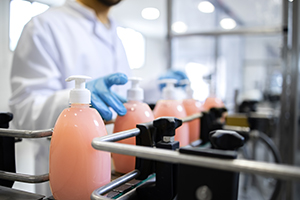
The formulation of household and industrial cleaners has evolved significantly, with a notable shift towards using concentrated products. This approach offers numerous benefits, including cost efficiency, reduced environmental impact, and improved performance. For formulators and chemists, understanding how to effectively work with concentrates is crucial for developing high-quality cleaning products that meet market demands. This article will explore the advantages of using concentrates, formulation strategies, and considerations for effective product development.
Benefits of Using Concentrates
- Cost Efficiency
Concentrated cleaners require less raw material per unit of product, leading to cost savings in formulation, packaging, and transportation. By reducing the volume of product, formulators can also lower production and shipping costs, making concentrated products more attractive to both consumers and manufacturers.
- Environmental Impact
Using concentrates can significantly reduce packaging waste and carbon emissions associated with transportation. By minimizing the amount of water or other solvents in a product, formulators can decrease the overall environmental footprint, aligning with sustainability goals and consumer preferences for eco-friendly products.
- Enhanced Performance
Concentrates often contain higher levels of active ingredients, which can enhance cleaning efficacy. This means fewer resources are needed to achieve the desired cleaning results, providing a competitive edge in performance-driven markets.
ULTRUS™ helps companies work smarter and win more, with powerful software to manage regulatory, supply chain and sustainability challenges. Learn more here!
Formulation Strategies for Concentrates
- Selecting Active Ingredients
Choosing the right active ingredients is crucial when formulating concentrates. High-performance surfactants, solvents, and builders can contribute to a cleaner’s effectiveness. Consider the following:
- Surfactants: Use surfactants that offer strong cleaning power and low toxicity. Anionic, nonionic, and amphoteric surfactants can be blended to optimize performance across various surfaces.
- Solvents: Select solvents that enhance solubility and improve cleaning action while being mindful of VOC regulations and safety profiles.
- Builders and Additives: Incorporate builders (like phosphates or zeolites) that enhance the efficacy of surfactants and consider additives like enzymes or fragrances that improve the user experience.
- Balancing Viscosity and Stability
Concentrated formulations often have different viscosity requirements. Consider the following when developing your product:
- Thickening Agents: Use thickeners to achieve the desired consistency while maintaining product stability. Natural gums or synthetic thickeners can help manage viscosity without compromising performance.
- Emulsification: If your formula includes both hydrophilic and lipophilic components, ensure stable emulsification to prevent separation over time.
- Testing and Validation
Rigorous testing is essential to ensure that concentrated formulations meet performance and safety standards:
- Efficacy Testing: Conduct cleaning tests on various surfaces to validate the effectiveness of your formulation.
- Stability Testing: Perform accelerated stability tests to assess how your product holds up over time, especially under varying temperature and humidity conditions.
- Compatibility Testing: Ensure that your concentrated product is compatible with various diluents and application methods, whether in spray bottles or bulk containers.
Considerations for Product Development
- Labeling and Instructions
Clear labeling is essential for concentrated products. Provide users with precise dilution instructions to ensure safety and effectiveness. Consider using graphics or color codes to make it easy for consumers to understand how to use the product correctly.
- Regulatory Compliance
Stay informed about regulations related to cleaning products, including labeling, ingredient restrictions, and safety data. Compliance with local and international regulations is critical in ensuring market access and consumer safety.
- Consumer Education
Educating consumers about the benefits of using concentrated products can enhance market acceptance. Provide information on the environmental impact, cost savings, and proper usage techniques to empower consumers to make informed choices.
Formulating with concentrates presents an exciting opportunity for household and industrial cleaner chemists. By leveraging the advantages of concentrated formulations, you can create effective, sustainable products that meet consumer needs and stand out in a competitive market. Through careful selection of ingredients, thorough testing, and clear communication, formulators can drive innovation and success in the cleaning product industry.
The views, opinions and technical analyses presented here are those of the author or advertiser, and are not necessarily those of ULProspector.com or UL Solutions. The appearance of this content in the UL Prospector Knowledge Center does not constitute an endorsement by UL Solutions or its affiliates.
All content is subject to copyright and may not be reproduced without prior authorization from UL Solutions or the content author.
The content has been made available for informational and educational purposes only. While the editors of this site may verify the accuracy of its content from time to time, we assume no responsibility for errors made by the author, editorial staff or any other contributor.
UL Solutions does not make any representations or warranties with respect to the accuracy, applicability, fitness or completeness of the content. UL Solutions does not warrant the performance, effectiveness or applicability of sites listed or linked to in any content.
